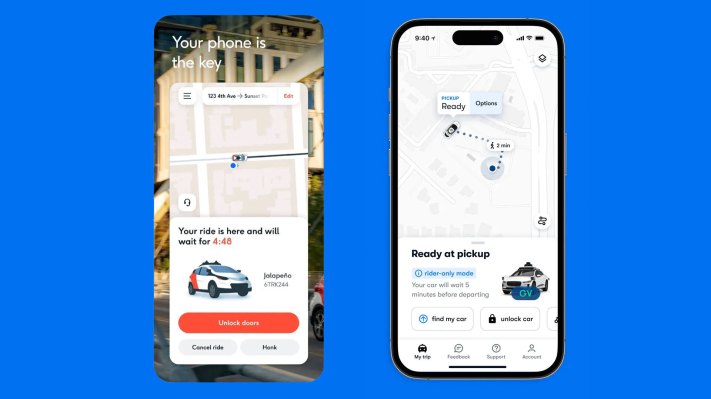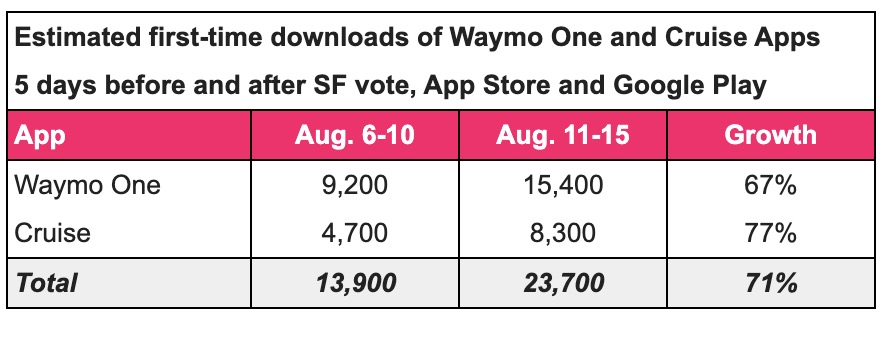Consumer interest in Cruise and Waymo’s competing robotaxi services surged following a vote last week by the California Public Utilities Commission that allowed the two companies to expand and charge for their driverless car operations in San Francisco.
Estimates from app intelligence provider data.ai showed 15,400 downloads of the Waymo One app in the five days following the August 10 vote — up 67% from the 9,200 downloads in the week prior. The Cruise app was downloaded by first-time users 8,300 times — a 77% increase — over the same five-day time frame.
Overall, the Cruise app has been downloaded a total of 146,000 times, according to data.ai. Waymo One has been downloaded about 513,000 times, according to data.ai estimates. The Waymo One app likely has a larger total number of downloads because the ride-hailing service has been operational in the greater Phoenix area for years now. Cruise has started to expand to other cities, including Phoenix, but its greatest concentration of self-driving cars and its primary commercial operations are in San Francisco.
The app downloads are one measure of demand. It’s less clear how many active users Cruise and Waymo have and at what rate consumers are being taken off the respective waitlists and given access to the service. Waymo recently told TechCrunch that 100,000 app users are on the waitlist for the Waymo One service in the San Francisco area.
The jump in interest comes as Cruise and Waymo begin charging for driverless rides in San Francisco. The companies have had limited paid operations in the city for months now. The CPUC vote gave both companies the final permit needed to offer commercial robotaxi services across San Francisco 24 hours a day, seven days a week and with no limit on the number of robotaxis they can put on the roads.
Cruise sent an email August 14, just days after the vote, informing users that it will begin charging for all driverless rides. The company noted that the fares are shared with the user upfront and promised there would not be surge pricing, a tactic used by the human driven ride-hailing apps Uber and Lyft.
“Paying to ride will help us grow, and expanded hours and upgrades to our service are coming soon,” the email read.
Waymo issued a similar message within its app and via email, albeit with a few differences. The company said it intends to start charging for Waymo One rides in San Francisco on August 21. Like Cruise, users of Waymo One will also see fares up front.
Waymo noted that the price is based on the most direct route and that fare will stay the same even if the car re-routes in an unexpected way. Waymo said prices may be higher during busier times such as nights and weekends. The company added that its wheelchair accessible vehicle (WAV) service in the city will remain free for now.
As consumer interest in Cruise and Waymo has grown, so has the opposition. Public comments prior to the CPUC vote showed a public divided on having robotaxis milling around public roads. In the days since the vote, several incidents involving Cruise self-driving vehicles — including one event in which 10 vehicles stalled and blocked traffic — has raised the ire of city officials as well.
San Francisco City Attorney David Chiu filed motions Wednesday with the CPUC to pause Cruise and Waymo’s plans to charge for robotaxi rides in the city at all hours.

